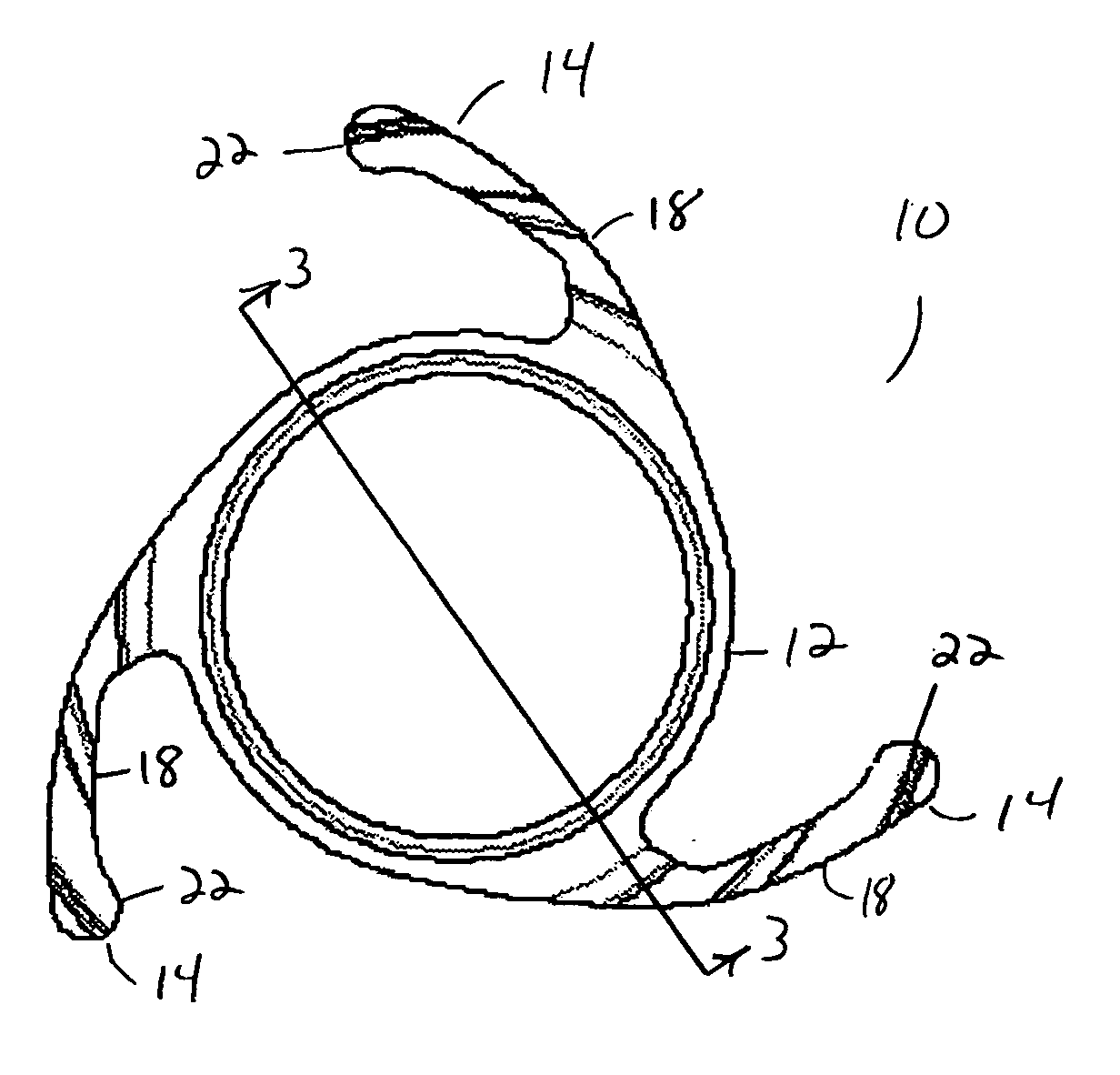Posterior chamber phakic intraocular lens
a phakic and anterior chamber technology, applied in the field of intraocular lenses, can solve the problems of corneal astigmatism, uncompensated cylindrical refractive error, and the need for a bifocal or multifocal correction device, and achieve the effects of avoiding pupillary blockage, improving aqueous flow, and low vaulting for
- Summary
- Abstract
- Description
- Claims
- Application Information
AI Technical Summary
Benefits of technology
Problems solved by technology
Method used
Image
Examples
Embodiment Construction
[0018] As best seen in FIGS. 1, 2 and 3, lens 10 of the present invention generally includes optic 12 and a plurality of filament-like haptics 14 integrally formed with optic 12. Optic 12 may be of any suitable size, such as between 4.5 mm and 6.5 mm in diameter, and may be biconcave, biconvex, concave / convex or any other suitable geometry. Optic 12 may also contain refractive or diffractive features, such features being well-known in the art. Lens 10 is preferably formed in any suitable overall length, for example, around 12 millimeters, for implantation in the posterior chamber in front of the natural lens, from a soft, foldable material such as a hydrogel, silicone or soft acrylic, such diameters and materials being well-known in the art. As best seen in FIGS. 2 and 3, haptics 14 project or vault posteriorly from optic 12, so as to locate optic 12 anteriorly of haptics 14 once implanted in an eye.
[0019] As best seen in FIG. 3, haptics 14 are not planar and contain raised portion...
PUM
 Login to View More
Login to View More Abstract
Description
Claims
Application Information
 Login to View More
Login to View More - R&D
- Intellectual Property
- Life Sciences
- Materials
- Tech Scout
- Unparalleled Data Quality
- Higher Quality Content
- 60% Fewer Hallucinations
Browse by: Latest US Patents, China's latest patents, Technical Efficacy Thesaurus, Application Domain, Technology Topic, Popular Technical Reports.
© 2025 PatSnap. All rights reserved.Legal|Privacy policy|Modern Slavery Act Transparency Statement|Sitemap|About US| Contact US: help@patsnap.com



